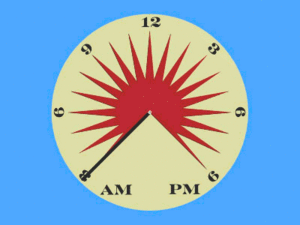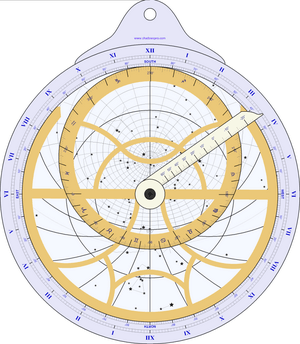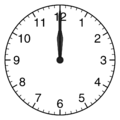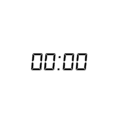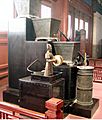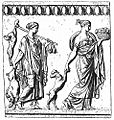Hour facts for kids
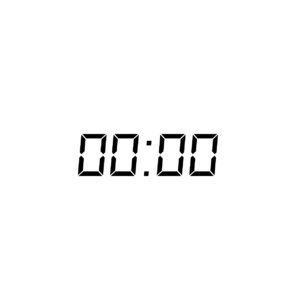
An hour (often shortened to h or hr) is a way we measure time. Think of it as a block of time! One hour is made up of 60 minutes. And if you put 24 hours together, you get one whole day.
Contents
How People Counted Hours Through History
For a long time, people counted hours differently. Before modern clocks, it was easier to start counting from big events like sunrise, sunset, or when the sun was highest at noon. Today, with super accurate clocks, starting at midnight is much simpler. Old tools like sundials and astronomical clocks sometimes show these older ways of counting.
Starting the Day at Sunrise
In ancient times, many cultures began their day at sunrise. This made sense because people relied on natural light. Their daily routines often started when it was bright enough to see.
Hours That Changed Length
Imagine hours that weren't always the same length! In some old systems, the time between sunrise and sunset was divided into 12 "day hours." The time between sunset and the next sunrise was divided into 12 "night hours." This meant that in summer, day hours were longer than night hours. In winter, it was the opposite! These were called "unequal" or "seasonal" hours. This system was used until mechanical clocks made "equal" hours popular.
Jewish law still uses a similar idea for "Talmudic hours." These hours are one-twelfth of the time from sunrise to sunset.
Counting From Sunset
Some places, like Italy long ago, started their day at sunset. The first hour began right after the sun went down. Hours were numbered from 1 to 24. This system helped people know how much time they had left to work before it got dark. You can still see clocks in places like Venice and Prague that show this old way of counting. The Islamic day also begins at sunset.
Counting From Noon
For many centuries, astronomers (people who study stars and planets) started their day at noon. This was because noon was the easiest time to measure accurately using the sun. It also meant that the date didn't change during a night of observing the sky.
Counting From Midnight
This is how we usually count hours today!
The 12-Hour Clock
In the modern 12-hour clock, counting starts at midnight. Hours are numbered 12, 1, 2, all the way to 11. Then it restarts at noon, going 12, 1, 2, up to 11 again. We use "a.m." (before noon) and "p.m." (after noon) to tell them apart.
The 24-Hour Clock
The modern 24-hour clock also starts at midnight. But instead of restarting at noon, it keeps counting from 0 to 23. So, 1 p.m. is 13:00, and 6 p.m. is 18:00. This system is often used in travel schedules and by the military.
Things Measured Per Hour
Many things are measured using "per hour" to show how much happens in that time. Here are a few examples:
- Air changes per hour (ACH): How many times the air in a room is completely replaced in an hour.
- Ampere-hour (Ah): A way to measure how much electrical charge a battery can hold.
- Kilometer per hour (km/h): How fast something is moving on land.
- Kilowatt-hour (kWh): A common way to measure how much electricity you use.
- Knot (kn): How fast ships and planes move, measured in nautical miles per hour.
- Miles per hour (mph): Another way to measure how fast something is moving on land.
- Working hour: The amount of time someone spends working in an hour.
Images for kids
-
Midnight (or noon) to 1 on a 12-hour clock with an analogue face
-
Midnight to 1 a.m. on a 24-hour clock with a digital face
-
A reconstruction of an old Chinese water clock in Beijing.
-
Two of the deified Hours from ancient Greek and Roman stories.
See also
 In Spanish: Hora para niños
In Spanish: Hora para niños


